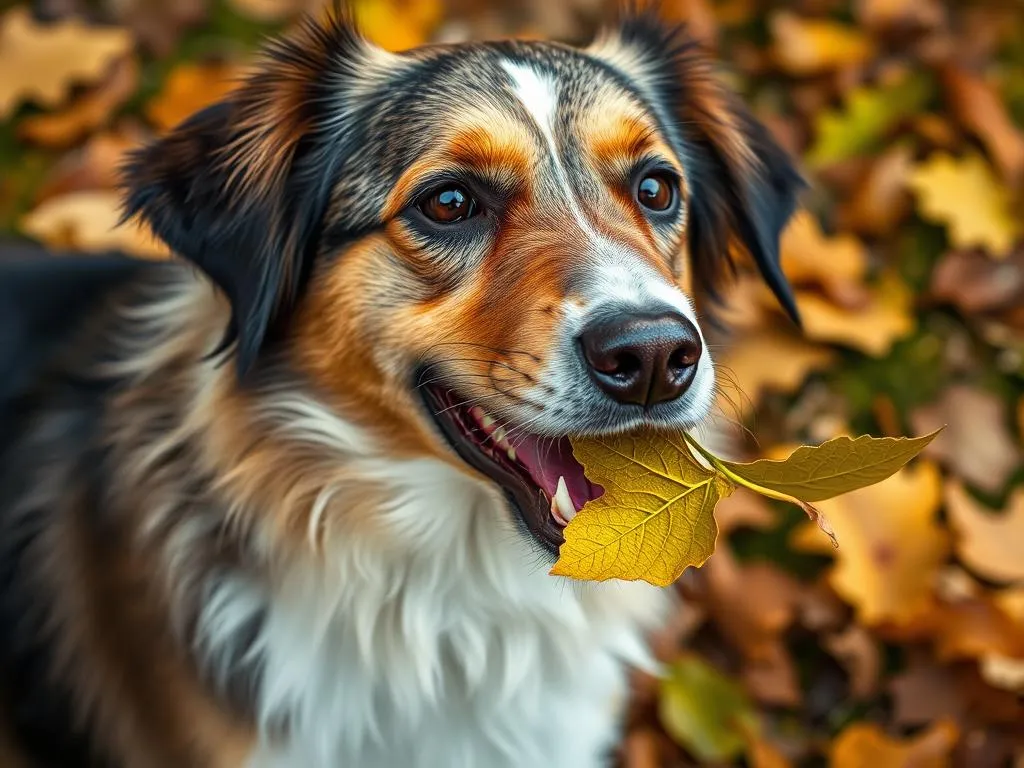
Introduction
Caring for a dog extends beyond just feeding and grooming; it encompasses understanding their health and behaviors. Being attuned to canine behaviors is crucial for any dog owner, as it helps in identifying potential health issues early on. One curious behavior that many dog owners often notice is their canine companions munching on leaves.
Why do dogs eat leaves? This question has intrigued pet owners and veterinarians alike. Exploring this phenomenon can provide insights into a dog’s health and well-being. In this article, we will delve into the reasons behind this behavior, its implications for dog health, and strategies for managing it effectively.
Understanding Canine Behavior
Natural Instincts
Dogs are descendants of wolves, and their eating habits reflect their ancestral instincts. In the wild, wolves have been known to eat a variety of plant materials, including leaves, to supplement their diets. Modern dogs, while domesticated, still retain some of these natural instincts, which can lead them to consume non-traditional food items like leaves.
Curiosity and Exploration
Dogs are inherently curious creatures. They explore their environment primarily through their sense of smell and taste. The texture and scent of leaves can attract their interest, prompting them to chew on them. This exploratory behavior is part of what makes dogs such engaging companions; they are always ready to discover something new in their surroundings.
Reasons Why Dogs Eat Leaves
Nutritional Deficiencies
One of the primary reasons dogs eat leaves is to address nutritional deficiencies in their diet. Just like humans, dogs require a balanced intake of nutrients, and a lack of certain vitamins or minerals can lead them to seek alternative sources. Leaves can provide fiber and trace nutrients, which may be beneficial, especially if their regular diet lacks these components.
Signs of Dietary Deficiencies
If your dog is frequently nibbling on leaves, it might be a sign of dietary deficiencies. Look for symptoms such as:
- Low energy or lethargy
- Dull coat or skin issues
- Unusual cravings for non-food items
Digestive Aid
Some dogs might eat leaves as a natural way to aid digestion. Certain plants can have mild laxative effects or can help in alleviating gastrointestinal discomfort. This behavior can be seen as a form of “self-medication,” where dogs instinctively consume specific items to improve their health.
Boredom and Anxiety
A lack of physical and mental stimulation can lead dogs to exhibit unusual eating habits, including the consumption of leaves. Boredom and anxiety can manifest in various ways, such as destructive chewing or compulsive behaviors. Signs of boredom or anxiety in dogs can include:
- Excessive barking
- Pacing
- Destructive behavior
To combat this, it’s essential to provide adequate mental and physical stimulation through toys, games, and regular exercise.
Playfulness
Dogs are playful animals, and their interactions with the environment can often include eating leaves as a part of their play. The act of chewing on leaves can be a fun and engaging activity for them, especially if they are exploring a new area or playing with their owners.
Potential Risks of Eating Leaves
Toxic Plants
While some leaves may be harmless, many common plants are toxic to dogs. Familiarizing yourself with these plants is crucial for your dog’s safety. Some toxic plants include:
- Oleander
- Azalea
- Lily of the Valley
Symptoms of poisoning can vary but may include:
- Vomiting
- Diarrhea
- Lethargy
- Seizures
Gastrointestinal Issues
Eating leaves can lead to gastrointestinal problems, including vomiting and diarrhea. Dogs have different digestive systems than humans, and certain plant materials can cause irritation or blockage. Watch for signs of gastrointestinal distress, such as:
- Abdominal pain
- Changes in appetite
- Persistent vomiting
Allergic Reactions
Just like humans, dogs can have allergies, and consuming leaves can trigger allergic reactions. Symptoms may include:
- Itching
- Inflammation
- Gastrointestinal upset
If you notice these signs after your dog eats leaves, it is essential to consult a veterinarian.
When to Be Concerned
Monitoring Leaf Consumption
As a responsible dog owner, it’s vital to monitor your dog’s behavior, especially if they frequently consume leaves. Keeping an eye on their habits can help you identify potential health concerns early. If your dog seems to be munching on leaves excessively, it may be time to consult a veterinarian.
Signs of Health Issues
Certain symptoms may indicate that your dog is experiencing health issues related to their leaf-eating habits. Look for:
- Prolonged vomiting or diarrhea
- Significant changes in appetite or behavior
- Signs of pain or discomfort
Timely veterinary intervention can make a significant difference in your dog’s health and recovery.
How to Manage Leaf Eating Behavior
Providing a Balanced Diet
Ensuring your dog receives a nutritionally complete diet is essential. Consult your veterinarian to determine the best dietary options for your dog’s specific needs. A balanced diet will help minimize the likelihood of them seeking out leaves due to nutritional deficiencies.
Increasing Exercise and Mental Stimulation
Regular physical activity and mental stimulation are crucial for your dog’s well-being. Engage them in various activities, such as:
- Daily walks
- Fetch games
- Puzzle toys
These activities not only provide exercise but also keep their minds engaged and reduce boredom.
Training and Behavioral Modification
If your dog frequently eats leaves, it may be necessary to train them to avoid this behavior. Use positive reinforcement techniques to encourage desired behaviors. For example, if your dog approaches leaves, redirect them to a toy or treat. This method effectively teaches alternative behaviors without punishment.
Conclusion
Understanding why dogs eat leaves is crucial for any dog owner. While this behavior can be linked to natural instincts, curiosity, or nutritional needs, it can also pose risks to their health. By being aware of the potential dangers, monitoring your dog’s behavior, and providing a balanced diet and appropriate stimulation, you can manage this behavior effectively.
Ultimately, a proactive approach to your dog’s health care will ensure a happy and healthy life for your furry friend. Recognizing the signs of potential health issues and adapting your care strategies accordingly is essential for maintaining your dog’s overall well-being.
Frequently Asked Questions (FAQs)
Is it normal for dogs to eat leaves?
Yes, it can be normal behavior for dogs to eat leaves due to their natural instincts, curiosity, or even nutritional needs. However, it’s essential to monitor the types of leaves they consume to ensure they are not toxic.
What should I do if my dog eats a toxic leaf?
If you suspect your dog has ingested a toxic leaf, contact your veterinarian immediately. Provide them with information about the plant and any symptoms your dog may be exhibiting.
How can I tell if my dog is sick after eating leaves?
Watch for signs such as vomiting, diarrhea, lethargy, or any unusual behavior. If these symptoms persist or worsen, consult your veterinarian for advice.
Are there any benefits to dogs eating leaves?
While some leaves may provide fiber and trace nutrients, it’s generally better for dogs to receive these nutrients from a balanced diet. Leaves can sometimes help with digestion, but caution is advised due to potential toxicity.
How can I prevent my dog from eating leaves?
To discourage leaf eating, ensure your dog has a balanced diet, provide sufficient exercise and mental stimulation, and train them to avoid consuming leaves through positive reinforcement techniques.
In conclusion, being informed and attentive to your dog’s behaviors, including why they may eat leaves, is a critical component of effective dog health care.









